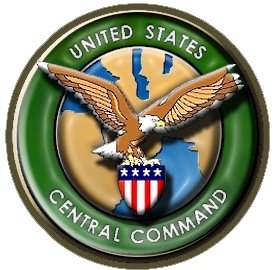Gen. Abizaid Speaks!
General John P. Abizaid, before the Senate Armed Services Committee on March 14, 2006, issued a Posture Statement of the United States Central Command. Highlights from the Introductory statements are:
INTRODUCTION:
United States Central Command (CENTCOM) is in the middle of a fifth consecutive year of sustained warfare in its area of operations. The Command remains engaged in three principal activities: (1) defeating al Qaida and associated extremist networks throughout the region, (2) stabilizing Iraq and Afghanistan, and (3) partnering with governments and their militaries in the region to help them develop the capabilities and institutions to defeat terrorists and extremists on their own.
MISSION:
U.S. Central Command conducts operations to attack, disrupt and defeat terrorism, deter and defeat adversaries, deny access to WMD, assure regional access, strengthen regional stability, build the self-reliance of partner nations’ security forces, and protect the vital interests of the United States within the area of responsibility.
NATURE OF THE REGION:
The CENTCOM region spans 6.5 million square miles and 27 countries including Iraq, Afghanistan, Iran, Egypt, the countries of the Horn of Africa, Jordan, Syria, Lebanon, the countries of the Arabian Peninsula, Pakistan, and the Central Asian states as far north as Kazakhstan. It incorporates a nexus of vital transportation and trade routes, including the Red Sea, the Northern Indian Ocean, and the Arabian Gulf. It is home to the strategic maritime choke points of the Suez Canal, the Bab el Mandeb, and the Strait of Hormuz. It encompasses the world’s most energy-rich region – the Arabian Gulf alone accounts for 57% of the world’s crude oil reserves, 28% of the world’s oil production, and 41% of the world’s natural gas reserves.
GLOBAL COUNTERTERRORISM AND THE LONG WAR:
Defeating al Qaida and associated ideological movements will require significant counterterrorism cooperation among our allies and partners not only within the CENTCOM AOR, but throughout the globe. It will also require the dedication of military, intelligence, and many other components of national power. Our network of allies and agencies will eventually defeat the al Qaida network, but we have yet to master the integration of national and international power to achieve success against this ruthless, borderless enemy. We have long experience with nation state warfare. We must, in the years ahead, learn to organize ourselves to defeat a stateless enemy capable of delivering state-like destruction without having state-like vulnerabilities. Defeating such an enemy requires a careful study of its clearly articulated strategy and vision.
THE NATURE OF THE ENEMY:
Al Qaida and ideologically-linked groups such as Ansar al Islam, the Islamic Movement of Uzbekistan, al Ittihad al Islami, Jemaah Islamiyah, and Ansar al Sunna represent the main enemy to long-term peace and stability in the CENTCOM AOR, promoting and thriving on instability and violence. They challenge our partners in Iraq, Afghanistan, Pakistan, and Saudi Arabia. They attack our friends in Jordan, Egypt, Turkey, Morocco, Madrid, and London. Although we have not experienced another attack on our homeland, the enemy that brought us 9/11 continues to represent a clear and unambiguous threat to our country.
This enemy seeks to topple local governments, establish a repressive and intolerant regional theocracy, and then extend its violence to the rest of the world. To effect such change, this enemy believes it must evict the United States and our Coalition allies from the region. Masking their true intentions with propaganda, rhetoric, and a sophisticated use of the mass media and the internet, this enemy exploits regional tensions and popular grievances. Al Qaida and its associated movements exhibit strategic patience and are willing to wait decades to achieve their goals.
PRINCIPLES OF GLOBAL COUNTERTERRORISM AND THE LONG WAR:
For the first time in our history, the principal enemy facing the United States is not another nation state – it is an ideologically-driven, borderless network. Such an enemy requires new thinking on how we organize and fight. Militarily, we will continue to kill and capture al Qaida leaders, shut down training camps, destroy operational cells, and prevent al Qaida and associated movements from exploiting ungoverned spaces. Certainly, such action requires precision targeting and highly sophisticated intelligence networks of our own. Nonmilitary measures to defeat al Qaida will be increasingly decisive in ultimately bringing about the network’s defeat. In order to counter its fanatical ideology and diminish its sources of strength, all elements of international and national power – diplomatic, political, economic, financial, the private sector – must be used to pressure the entire al Qaida and associated movement network over time.
STRATEGIC PRESENCE:
As we implement these principles, forces should be deployed in the region to focus on building partner military capacity, protecting the flow of strategic resources, deterring hostile states, and maintaining regional U.S. counterterrorist capacity. It is important to understand that the current large conventional force posture is largely a function of counterinsurgency work in both Iraq and Afghanistan.
His statement further describes the nature of the enemies we face, the work being done BY REGION to address them, the strategy for turn over of Security Control, and the forward thinking of known future conflicts...Iran being the most obvious.
While the MSM and our state-side Political Heroes would have you thinking differently, take the long time needed to get the perspective from the fighters, not the hand-wringing whiners and capitulaters...this is a MUST read.



0 Comments:
Post a Comment
<< Home